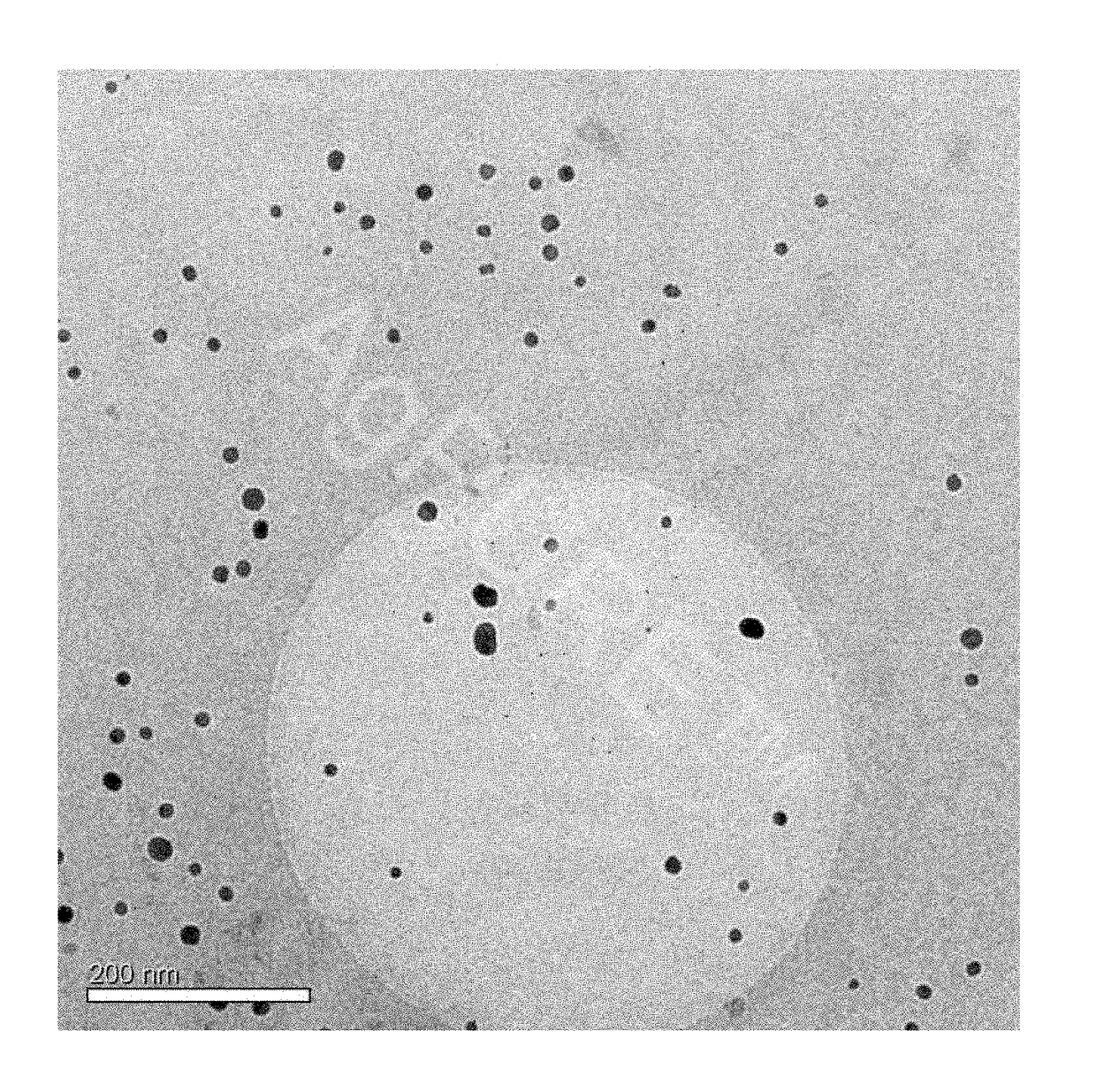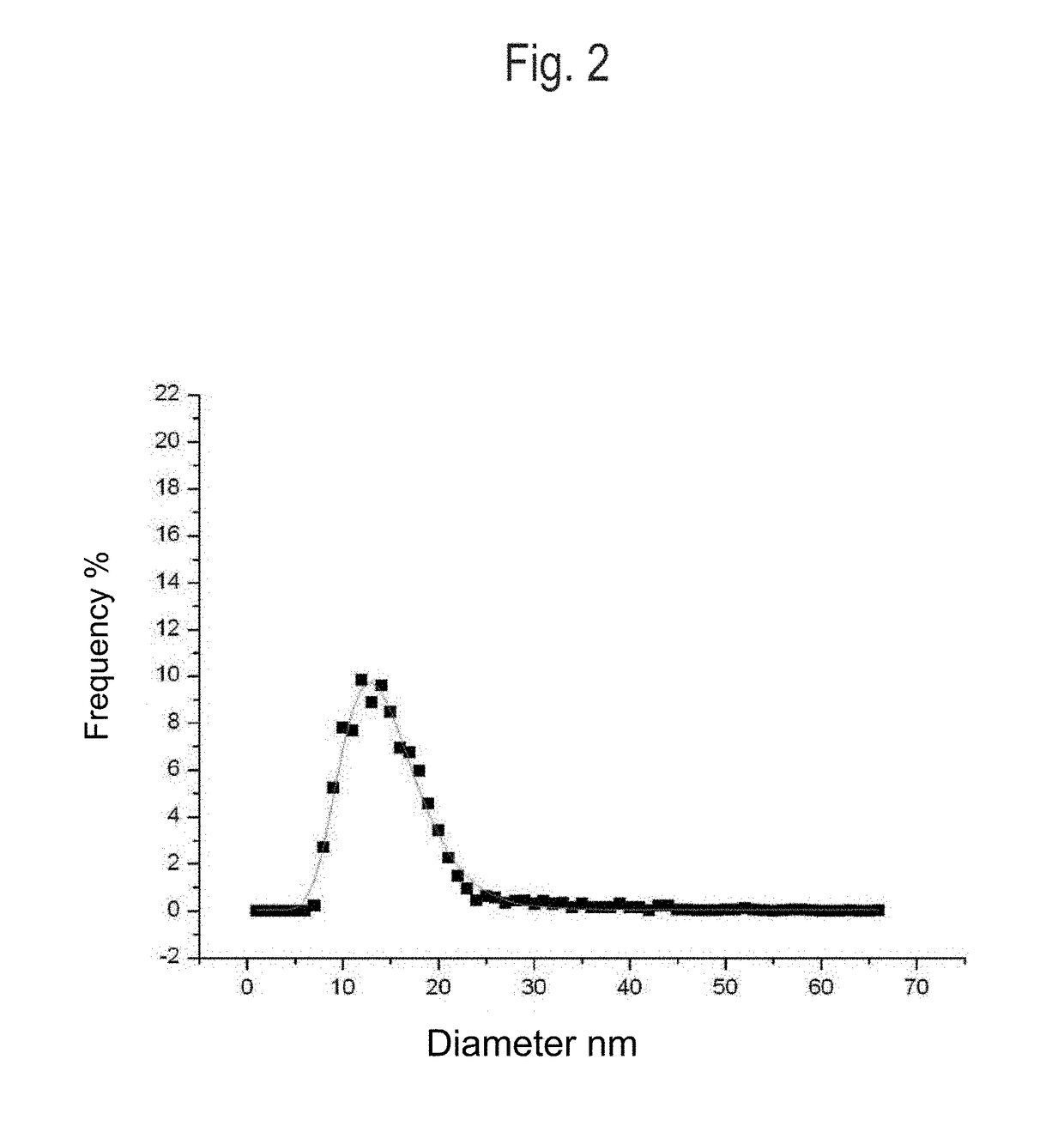Method for Producing a Dispersion Containing Silver Nanoparticles and Use of a Mixture Containing Silver Nanoparticles as a Coating Agent
a technology of silver nanoparticles and coating agents, which is applied in the field of coating materials, can solve the problems of insufficient effect of adding silver particles, failure of adding nanoparticulate silver to solid components, bone cement, etc., and achieves the effect of high reaction ra
- Summary
- Abstract
- Description
- Claims
- Application Information
AI Technical Summary
Benefits of technology
Problems solved by technology
Method used
Image
Examples
example 1
[0150]Formulation of Nanosilver with Hydrazine Hydrate, Ammonia, Tagat TO V™, and Tween20
[0151]A total of 7,000 g silver nitrate, 1,760 g Tagat TO V™, 1,760 g Tween20™, and 512 g hydrazine hydrate were placed in 28,439 g de-ionised water. The solution was stirred for 3 hours. Then, 5,000 g ammonia solution (14%) were added continuously as droplets over a period of 24 hours. The reaction was complete once the addition was completed and yielded a dispersion having a silver content of 10.0 wt.-%. The particle size and distribution were determined by means of a UV-VIS spectrum (FIG. 1). According to the results, a 10-percent nanosilver dispersion having a nanosilver particle size of 1-30 nm was obtained.
[0152]The absorption spectrum was taken on an aqueous solution, diluted 5,000-fold, that contains 20 ppm nanosilver, is clear, and deep-yellow in colour. The UV-VIS spectrum was recorded in the wavelength range of 750 to 350 nm. The absorption values measured showed a peak with a maximum...
example 2
[0155]Formulation of Nanosilver with Hydrazine Hydrate, Ammonia, and Tagat TO V™
[0156]A total of 7,000 g silver nitrate, 3,520 g Tagat TO V™, and 1,331 g hydrazine hydrate were placed in 27,620 g de-ionised water. The solution was stirred for 3 hours. Then, 5,000 g ammonia solution (14%) were added continuously as droplets over a period of 24 hours. The reaction was complete once the addition was completed and yielded a dispersion having a silver content of 10.0 wt.-%. The particle size and distribution were determined by means of a UV-VIS spectrum. According to the results, a 10-percent nanosilver dispersion having a nanosilver particle size of 1-30 nm was obtained.
example 3
[0157]Formulation of Nanosilver with Hydrazine Hydrate, Potassium Hydrogencarbonate, Tagat TO V™, and Tween80™
[0158]A total of 7,000 g silver nitrate, 2,360 g Tagat TO V™, 1,160 g Tween20 ™, and 1,331 g hydrazine sulfate were placed in 27,620 g de-ionised water. The solution was stirred for 3 hours. Then, 5,000 g potassium hydrogencarbonate solution (1,900 g KHCO3) were added continuously as droplets over a period of 30 hours. The reaction was complete once the addition was completed and yielded a dispersion having a silver content of 10.0 wt.-%. The particle size and distribution were determined by means of a UV-VIS spectrum (FIG. 1). According to the results, a 10-percent nanosilver dispersion having a nanosilver particle size of 1-30 nm was obtained.
PUM
 Login to View More
Login to View More Abstract
Description
Claims
Application Information
 Login to View More
Login to View More - R&D
- Intellectual Property
- Life Sciences
- Materials
- Tech Scout
- Unparalleled Data Quality
- Higher Quality Content
- 60% Fewer Hallucinations
Browse by: Latest US Patents, China's latest patents, Technical Efficacy Thesaurus, Application Domain, Technology Topic, Popular Technical Reports.
© 2025 PatSnap. All rights reserved.Legal|Privacy policy|Modern Slavery Act Transparency Statement|Sitemap|About US| Contact US: help@patsnap.com



